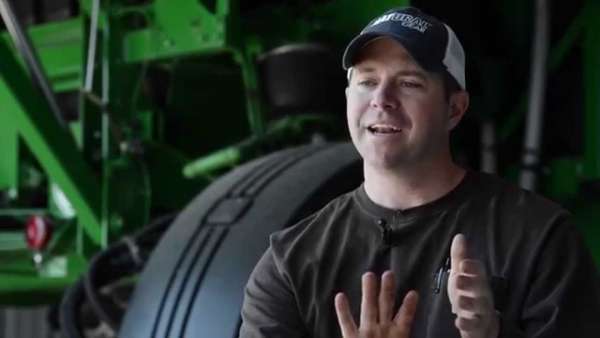Future of food
Lessons
# Comparing population, topography and attitudes
Students compare India to the Southern part of the U.S. in terms of population, land mass and food availability.
Files
# GMOs and “smart” farming
Students learn background on GMOs by investigating sources and engaging in a see-saw debate. Students explore precision-ag techniques and how they may help increase sustainability.
Files
# Assessment
Students show an understanding of the balance between economic, social and environmental needs (e.g., agricultural practices, energy use, population growth), while focusing on meeting present needs without compromising the ability of future generations to meet their needs.
Files
Teacher background
Agricultural practices have changed to increase production on fewer acres by fewer farmers, meet consumer expectations, and provide food for an increasing global population. As countries continue to develop economically, the demands of their populations also change to include a greater variety of foods and an increase in the demand for meat as a source of protein in their diets. Some of the agricultural advances farmers are employing to meet the demands include GMOs, better hybrid seeds and “smart” farming practices also known as precision agriculture. However, many of these methods are only available to more economically developed countries. Precision agriculture is more than one technology or activity, it is “a management system that is information and technology based, is site specific and uses one or more of the following sources of data: soils, crops, nutrients, pests, moisture, or yield, for optimum profitability, sustainability, and protection of the environment (USDA, Agronomy Technical Note No.1, June 2007).”
The push for the use of precision management systems arises from the future need to feed over nine billion people by 2050. These systems help to maintain productivity and profitability of the agriculture system while attempting to maximize yield. Techniques range from soil testing to determine the amount of nutrients available and the amount needed to grow a specific crop; hybrid or variety selection specific to the conditions under which it will be grown (climate, soil type, etc); pesticide choices to address specific pests within a field; as well as using data from all of these techniques to make future decisions.
Specific technologies have been developed to aid in the use of the data collected by various methods. They include: auto-steering of equipment to maximize field use and decrease overlap of crop planting and fertilizer and pesticide application; GPS systems of various types to enable auto-steering and other technologies; variable rate seeding, fertilizer and pesticide application; yield monitoring systems mounted to harvesters; and remote sensing to collect data about field health and responses to management strategies.
The benefits of these techniques are many. They include: precise nutrient applications that ensure that the right source and right amount is applied in the right place at the right time; precise pesticide applications to address the specific pest; variable rate irrigation making sure the water rate is customized to the crop and the area of the field; ability to see what is happening to the crop within the field, while the crop is growing or after a weather event that may not be visible from the ground; and limiting trips over the field which in turn lowers soil compaction and reduces fuel consumption.
Information taken from: http://www.nrcs.usda.gov/Internet/FSE_DOCUMENTS/stelprdb1043474.pdf
Next gen science standards
Science and engineering practices
- Developing and using models
- Analyzing and interpreting data
- Using mathematics and computational thinking
- Engaging in argument from evidence
Crosscutting concepts
- Cause and effect
- Systems and system models
Disciplinary core ideas/content
- ESS2B Plate tectonics and large-scale system interactions
- ESS3A Natural resources
- ESS3C Human impacts on Earth systems







Share this